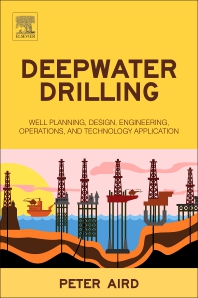I read in the news the other day that America may pass Saudi Arabia as the world’s largest producer of oil and gas. This certainly comes as a pleasant surprise to those of us who lived through previous booms and subsequent busts. It’s kinda like the old West Texas bumper sticker that read, “Lord, give us one more boom, we promise not to waste it away,” or words to that effect.
We can thank American ingenuity and leading edge technology for that. Although little noticed by the public, directional drilling has made many known, but marginal fields productive. Drillers have always been able to bend the drill pipe “around the corner,” but navigation has been the challenge. Major companies such as Baker Hughes and Schlumberger have put billions of dollars into making sure the driller knows where the bit is at all times. This is no mean feat. The navigation tools are at the bottom of the drill string, and the navigator is thousands of feet above on the rig. Radio signals won’t penetrate more than a few feet underground, so that’s out. A wire from the bit to the surface is equally unworkable. The way it is done is with mud pulses. A valve in the tool opens and closes rapidly sending a dot-dash type signal up the drill pipe to be read on the floor. This technology has been around for some years, but the sophistication and range have improved dramatically. Right now, the depth limit on a well is the strength of the signal, and every generation of tools gets better.
Sometimes drillers will find a formation that contains oil or gas, but not enough to make it worth drilling. If the formation is only 50 feet thick and he makes a well in it, the well may only produce 20 barrels a day. Hardly worth the effort. But, if somehow that formation would be 10,000 feet thick, it might make 1,000 barrels a day. The driller and the land owner can now drive new pick-ups. The trick is directional drilling. Drill down to the formation, turn the bit and stay in it as long as possible.

|
|
Fracking sites, like this one in Colorado’s Roan Plateau, can use thousands of feet of drill pipe. Columnist Wayne Nash says education and a little rebranding can help get Americans more comfortable with fracking. Source: iStock |
The other problem we have had to solve is getting the oil out of the formation. We drilled up most of the easy formations years ago. Oil and gas are contained in very small bubbles in the formation called pores. Porosity is the measurement of the ratio of pores to the amount of surrounding formation. In order to get the oil out, the rock must be permeable. In other words, the pores must be connected so the oil or gas can flow to the wellbore. This measurement is called permeability. Most of the big shale plays making the news now have fair porosity, but very low permeability. The trick to increasing the permeability and connecting the pores is hydrofracking. This technique connects the pores and increases permeability, and has been around almost as long as I have—and I am approaching middle age. A recent poll indicated that 60 percent of Americans approve and encourage fracking. They know that it will stimulate the economy, provide good paying jobs and lessen our dependence on oil from countries that pretty much hate our guts.
The other 40 percent doesn’t understand fracking. They can be divided into several groups. Contrary to what science, the government and common sense says, some people think it will pollute our groundwater. It hasn’t done it yet. Another group just plain does not like petroleum. They generally live in the city and ride the bus. What do they think the bus runs on, magic pixie dust? Or they drive electric cars, which get their power from mostly coal fired power plants. But they can’t see those plants, so it must be clean, right? Others want to use wind power, unless it is in their neighborhood. Some, led by their Hollywood leaders whose looks come out of a jar and whose educations seem to be the ability to memorize one line at a time, want to prevent “global warming.” As I write this at 31 below zero, I wish they might be right, at least a little.
The key seems to be education, which we, in the industry, should do at every opportunity. That will help a lot and remove some of the obstacles. With others, education is a forlorn hope. They are still afraid of clean nuclear power and have to read the instructions on the hair dryer to keep from taking it in the bathtub. With this group, I suggest a different approach. We, in the industry, should quit using the term fracking. It scares the chicken-little types. I suggest we call it the “Green Energy Enhancement iNcentive,” or GREEN for short. Then we can ask people if they want us to drill a dirty, old-style well or a GREEN well. This slight change in nomenclature ought to convince even the tie-dyed, tofu eating denizens of Boulder to let us drill. It worked for the Affordable Care Act. ND
For more Wayne Nash columns, visit www.thedriller.com/wayne.






